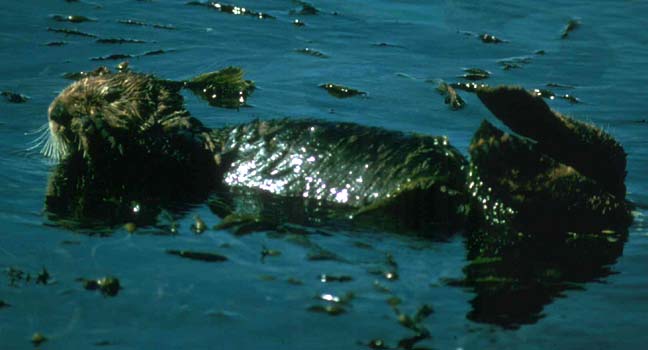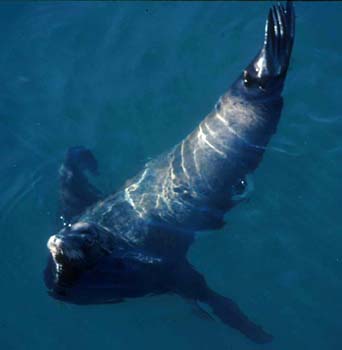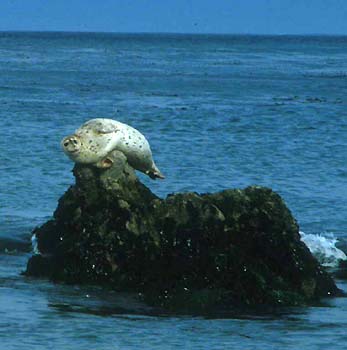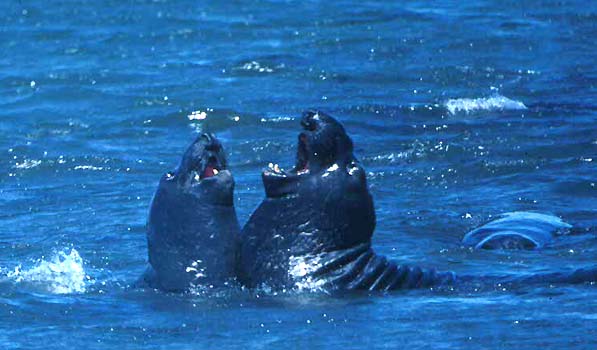| Monterey Bay is exceptional for its wealth of pelagic mammals other
than cetaceans. It is the only place in the world where five species of
pinnipeds (seals and sea-lions) may be found most years, not to mention
a pelagic otter. I enjoy watching sea otters lying on their backs, feeding
leisurely on crab or abalone, to dive 'just in time' to avoid the pounding
surf about to engulf them (photo right; © Don Roberson).
Barking California Sea Lions are a constant in fall and winter in Monterey, and I hear them from my backyard hot tub when conditions are right. Harbor seals are common attractions along the rocky shore and in Elkhorn Slough. The other pinnipeds, though, require either trips to breeding colonies just north or south of Monterey County (Northern Elephant Seal and Steller's Sea Lion) or luck on offshore boat trips. I've never seen a Northern Fur Seal from shore. Short photo introductions to the various species follow.
|
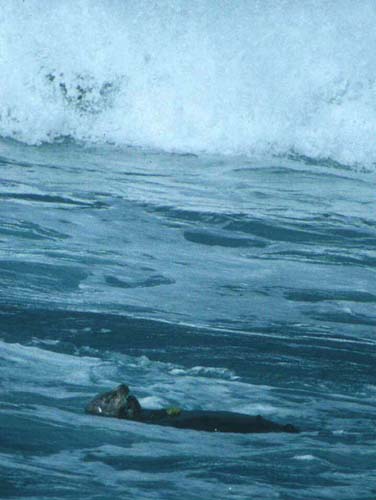 |
